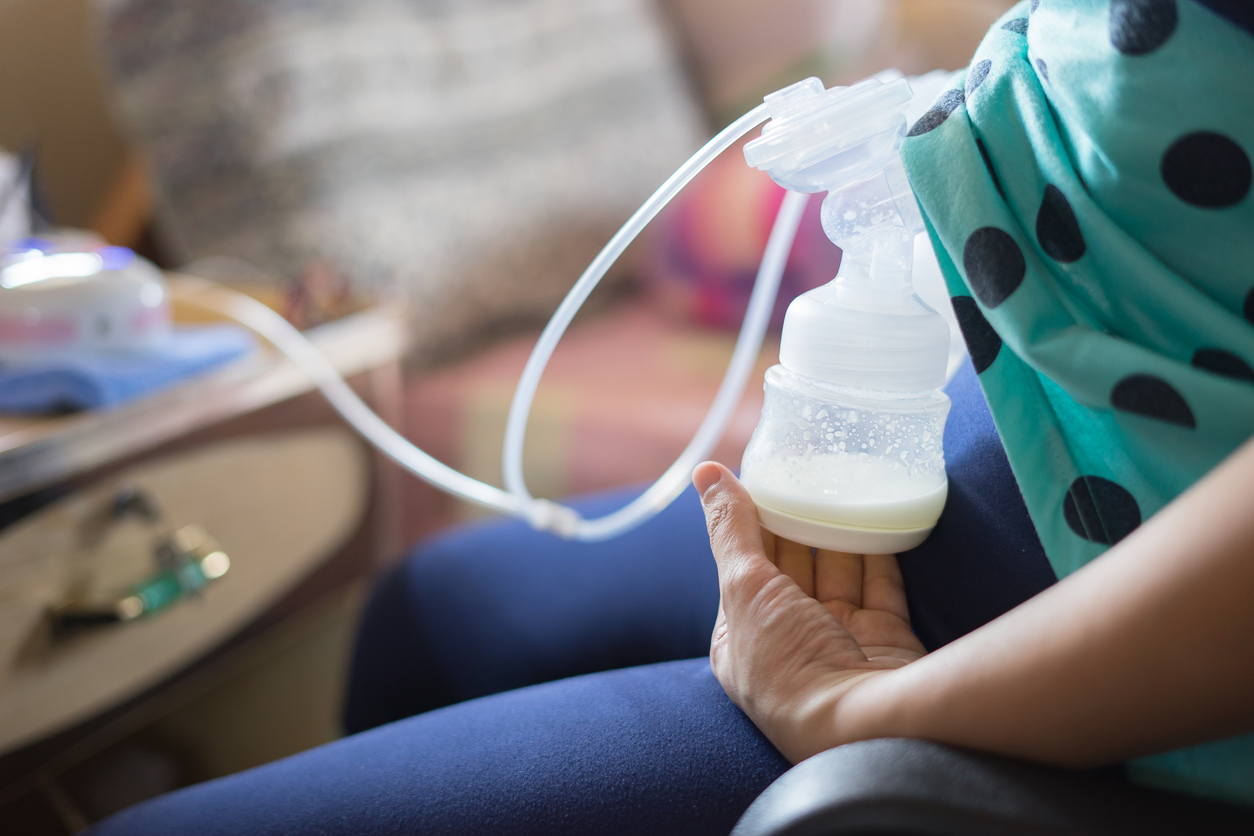
By this time, I’m sure you’re aware that we have a serious formula shortage going on. Whether you’re already supplementing with formula or feel you may have to soon, not having what you need to feed your baby is a serious concern. Regardless of your feelings on formula itself, your child needs to get fed. Not having formula as a fallback, should your baby need it, is a terrifying prospect. Sudden growth spurts can increase a baby’s daily intake overnight. Just when it feels like you are producing enough, it becomes impossible to keep up. Of women who choose to breastfeed, 95% will pump at some point in their journey. Some babies don’t latch effectively. Many mothers need someone else to feed their child while they go back to work. Whatever your reason for needing to increase your supply, I’m here to help you do that. Here are three strategies to increase breast milk production.
1. Make sure that you’re starting with the right equipment.

Most importantly, you will need a reliable pump. There are a lot of options out there. If your goal is for your child to be mostly or entirely subsisting on pumped breast milk, I highly recommend getting access to a hospital-grade pump. They can run a bit outside of many people’s budget, but you still have options! Some companies will rent you one for a monthly fee. Considering that eventually your baby will grow into eating regular foods, renting may make more fiscal sense than buying. Additionally, if you are low income, it is worth looking into your local WIC program. If you qualify, the program may be able to loan you one free of cost.
Another tool you’ll need is a pumping bra. For some reason, I held off on getting one. Let me tell you, it is a game changer! Not having to hold the flanges in place frees you up to be able to actually get things done while pumping. In fact, I am using one as I write this.
While you’re at it, having the right flange size is of the utmost importance. The flange is the funnel-shaped part of the pump that goes against the breast. When I started pumping, I thought that flange size correlated with breast size. It does not. Flange size is based on nipple diameter. I ended up with blisters on my nipples. This information probably would have been more useful than anything the nurse told me the day we left the hospital.
2. Pump in a way that mimics cluster feeding.
Cluster feeding is when a baby feeds very frequently. It often occurs during growth spurts and is nature's way of telling your body that it needs to produce more milk. Simulating cluster feeding with the breast pump may be the single greatest way to increase your total daily production. There are two popular methods for making this happen. For both of these, you’ll probably want to find time in the morning hours. That’s when milk production is usually at its peak. Some evidence shows that the very best time is between 1 a.m. and 4 a.m. I did that at the beginning and found that the impact on my morale was not worth it. Maintaining your sanity is an important part of motherhood. Making yourself crazy trying to do this perfectly is not the goal here. Give yourself some grace.
The first technique is often called “power pumping.” To do this, you alternate pumping and taking short breaks over the course of an hour. The schedule usually goes: 20 minutes pumping, 10 minutes of rest, 10 minutes pumping, 10 minutes of rest, 10 minutes pumping, done. This can be done twice per day for maximum results. Many women still get good results doing it just once per day. Once again, keep it manageable. You won’t get as much milk during the second two rounds of pumping this way, and that is totally to be expected. Remember that you are looking to help production over time, not necessarily to get more from this hour. One of the best perks of this method is that you won’t have to clean the pump any additional times.
The next option is to pump once an hour, for three hours in a row. This is a better option if you can’t dedicate an entire hour at once. Plus, you’ll get more immediate results in terms of your total output for the day. If you don’t have a stash built up and you’re running out of breast milk to feed your baby, this may be your best bet.
3. Breast massage has many benefits.
Breast massage stimulates blood flow, loosens any blockages, and physically pushes the milk toward your nipples. This can be a great way to involve your partner, as well. Partners can feel a bit helpless when you’re having to do all of this work keeping the baby fed, so this is one way they can pitch in. (Be sure to ask them to sterilize the pump and some bottles while you’re at it!)
If you’re solo, that’s totally fine, too. You can totally use that pumping bra we talked about to hold the flanges in place while you knead. Massage from the outside edge of the breast tissue in, toward the areola. This can be done before you start pumping, as well as any time the milk doesn’t seem to be flowing fast enough. It is also a fantastic way to make sure that you are fully emptying both breasts during each session.
With these three strategies and a bit of patience, you are sure to see an improvement in your milk production!




